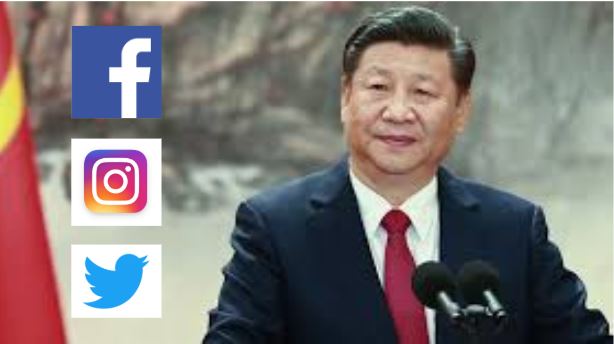There is an age old adage—“A lie repeated a thousand times becomes the truth” and in the case of People’s Republic of China, this seems to be the philosophy the Xi Xinping regime has adhered to mitigate the Wuhan virus disaster PR. The authoritarian regime has hopped on the propaganda locomotive and their current strategy revolves around sowing seeds of doubt in the minds of the international audience and convincing its people about the “foreign origin” of the novel Wuhan virus and how it has successfully averted the crisis.
In the digital age we live in, China has devised a two pronged approach to buy good press in the world. First, use the state owned media channels to push positive news pieces and second, use social media platforms like Facebook and Twitter (which are technically banned in China)—pay for the ads and run a campaign internationally. A detailed study by Stanford University has unveiled how China has been going about its sinister cover up work to set a favourable narrative.
Chinese state media’s English-language Facebook pages post very frequently, and have extremely large audiences. CGTN has over 96 million Page likes (and most probably you would have seen its ad on your timeline more than once); CNN in contrast has only 32 million. Facebook’s Ads Library shows specific regional ad targeting in India, Nepal, Bangladesh and the Philippines suggesting that English is used to communicate state views to a broad global audience.
Chinese outlets include many articles with a focus on positive stories such as the number of recovered patients and examples of successful treatments, while U.S. media reported on new cases of infections and trends in death. For example, Chinese state media reported on a coronavirus patient who gave birth to a healthy baby not infected with coronavirus, whereas the U.S. media told the story of a different newborn in Wuhan who had become the youngest coronavirus patient. CNN credited the story’s source as Chinese state media CCTV, yet no English-language Chinese state media posted this story on their Facebook pages.
China is using Facebook, Instagram ads to target US and every other countries that speaks against it. The racism narrative pushed by Beijing is one of many gaining traction in U.S. media and asserts that calling the pathogen “the Wuhan virus” is racist, despite the fact that Chinese state-run media have used the term themselves, as seen in Xinhua, the Global Times, and elsewhere.
China has unleashed good PR campaign by increasing its efforts to position itself as a world leader in virus response and a model of effective governance whilst blaming the United States for the coronavirus pandemic.
The cover-up of Li Wenliag’s death—the whistle-blower doctor who first informed the world about the dangers of COVID-19 is also a interesting case study. China initially detained him and forced him to sign a letter stating he made ‘false comments’ but when he died in February the state owned media very delicately played the entire episode and even went on to say that that ‘despite the best attempts, they could not save the doctor’. Contrary, the whole world had an outpour of anger on China over Li’s death.
Reported earlier by TFI, when China sent medical aids to Italy, as expected, it simultaneously started a social media campaign to bolster its figure of ‘messiah’. The micro-blogging site Twitter was filled with thousands of posts celebrating Chinese solidarity with the Italians.
But there was a major discrepancy in the entire rendezvous—nearly half of the tweets (46,3%) published between March 11 and 23 with the hashtag #forzaCinaeItalia (Go China, go Italy) and more than one third (37,1%) of those with the hashtag #grazieCina (thank you China) had come from bots—for which China had paid from its coffers.
Facebook and Twitter have been routinely deleting all conspiracy theories regarding the origin of Wuhan virus pandemic. Although some are outright false, few conspiracy theories have seemingly hit the nerves of Chinese officials.
Twitter had come under the scanner for banning financial market website Zero Hedge from the social media platform after it published an article linking a Chinese scientist to the outbreak of the fast-spreading coronavirus last week.
The move against the website which was anti-China in its sentiments and writings raised eyebrows and questions—what if China was behind this move too.
It takes minimal effort to understand that China has gone on an overdrive to sell its version of the story to the world by spending huge bucks. Governments around the world need to be wary of such malicious coverage by China. Monitoring of social media needs to done stringently so that Beijing’s propaganda is diminished before it is able to take its full shape and change the discourse of narrative.
